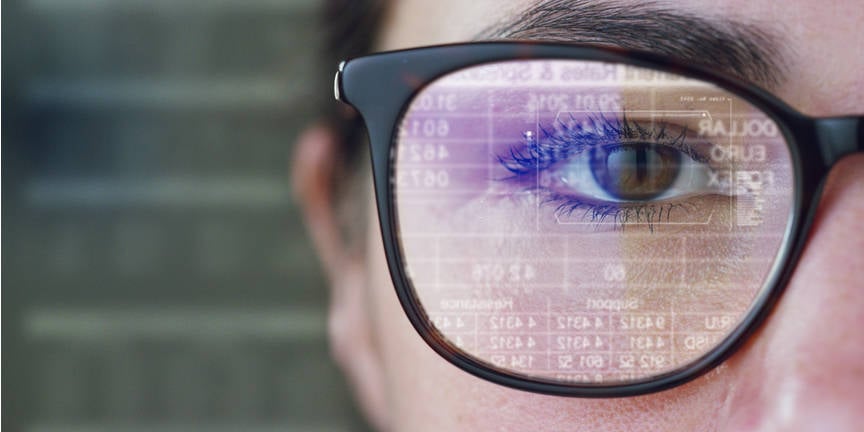Boffins on the College of Michigan within the US and Zhejiang College in China wish to spotlight how bespectacled video conferencing members are inadvertently revealing delicate on-screen info through reflections of their eyeglasses.
With the COVID-19 pandemic and the rise in distant work, video conferencing has turn out to be commonplace. The researchers argue the following privateness and safety points deserve additional consideration, they usually’ve been casting a watch on this uncommon assault vector.
In a paper distributed through ArXiv, titled, “Personal Eye: On the Limits of Textual Display screen Peeking through Eyeglass Reflections in Video Conferencing,” researchers Yan Lengthy, Chen Yan, Shilin Xiao, Shivan Prasad, Wenyuan Xu, and Kevin Fu describe how they analyzed optical emanations from video screens which were mirrored within the lenses of glasses.
“Our work explores and characterizes the viable menace fashions based mostly on optical assaults utilizing multiframe tremendous decision methods on sequences of video frames,” the pc scientists clarify of their paper.
“Our fashions and experimental ends in a managed lab setting present it’s doable to reconstruct and acknowledge with over 75 % accuracy on-screen texts which have heights as small as 10 mm with a 720p webcam.” That corresponds to twenty-eight pt, a font measurement generally used for headings and small headlines.
“The current-day 720p digital camera’s assault functionality typically maps to font sizes of 50-60 pixels with common laptops,” defined Yan Lengthy, corresponding creator and doctoral candidate at College of Michigan, Ann Arbor, in an electronic mail to The Register.
“Such font sizes can largely be present in slide displays and the headings/titles of some web sites (for instance, ‘We saved you a seat in chat’ on https://www.twitch.television/p/en/about/).”
With the ability to learn mirrored headline-size textual content is not fairly the privateness and safety downside of having the ability to learn smaller 9 to 12 pt fonts. However this system is predicted to offer entry to smaller font sizes as high-resolution webcams turn out to be extra frequent.
“We discovered future 4k cameras will have the ability to peek at most header texts on nearly all web sites and a few textual content paperwork,” mentioned Lengthy.
When the purpose was to determine simply the particular web site seen on the display screen of a video assembly participant from an eyeglass reflection, the success charge rose to 94 % among the many Alexa high 100 web sites.
“We imagine the doable functions of this assault vary from inflicting discomforts in day by day actions, e.g. bosses monitoring what their subordinates are searching in a video work assembly, to enterprise and buying and selling situations the place the reflections would possibly leak key negotiation-related info,” mentioned Lengthy.
He mentioned the assault envisions each adversaries collaborating in conferencing classes and likewise those that receive and play again recorded conferences. “It might be fascinating for future analysis to scrape on-line movies equivalent to from YouTube and analyze how a lot info is leaked via glasses within the movies,” he mentioned.
Quite a lot of elements can have an effect on the legibility of textual content mirrored in a video convention participant’s glasses. These embody reflectance based mostly on the assembly participant’s pores and skin shade, environmental gentle depth, display screen brightness, the distinction of the textual content with the webpage or software background, and the traits of eyeglass lenses. Consequently, not each glasses-wearing individual will essentially present adversaries with mirrored display screen sharing.
With regard to potential mitigations, the boffins say that Zoom already supplies a video filter in its Background and Results settings menu that consists of reflection-blocking opaque cartoon glasses. Skype and Google Meet lack that protection.
The researchers argue different extra usable software-based defenses contain focused blurring of eyeglass lenses.
“Though not one of the platforms helps it now, now we have carried out a real-time eyeglass blurring prototype that may inject a modified video stream into the video conferencing software program,” they clarify. “The prototype program locates the eyeglass space and applies a Gaussian filter to blur the world.”
The Python code will be discovered on GitHub. ®
Supply hyperlink


